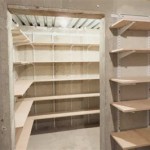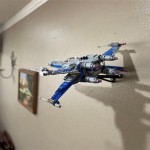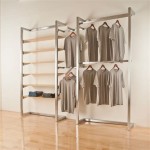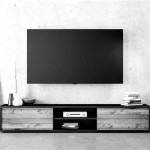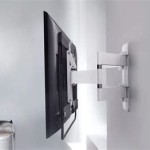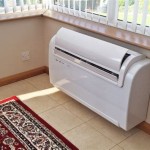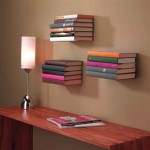Understanding TV Wall Mount Weight Limits: A Comprehensive Guide
Selecting the appropriate TV wall mount is a crucial step in safely and effectively mounting a television. A key factor to consider is the weight limit of the mount. Exceeding this limit can lead to serious consequences, including damage to the television, the wall, and potential injuries. This article provides a comprehensive overview of TV wall mount weight limits, outlining the factors that contribute to these limits, how to determine the appropriate weight capacity, and the potential risks associated with exceeding the stated maximum.
The weight limit of a TV wall mount refers to the maximum amount of weight the mount is designed to safely support. This limit, typically measured in pounds or kilograms, is determined by the mount's construction materials, design, and the quality of its hardware. Manufacturers rigorously test their mounts to ensure they can withstand the specified weight under normal operating conditions. Adhering to these weight limits is paramount for ensuring the safety and longevity of both the television and the mounting structure.
Factors Determining TV Wall Mount Weight Limits
Several interconnected factors influence the weight limit of a TV wall mount. These factors encompass the materials used in construction, the design and engineering of the mount, and the quality of the included hardware.
Material Composition: The materials used in the construction of a TV wall mount directly correlate with its load-bearing capacity. Steel is a common choice due to its high strength-to-weight ratio, offering robust support even in relatively thin profiles. Aluminum, while lighter, is often used in mounts designed for smaller, lighter televisions. The gauge (thickness) of the metal also plays a critical role; a thicker gauge offers greater strength and a higher weight limit. The type of metal alloy used further influences the mount's ability to withstand stress and weight over prolonged periods. Manufacturers often specify the grade of steel or other materials used in the construction, allowing consumers to assess the overall strength and durability.
Design and Engineering: The structural design of a TV wall mount is as important as the materials used. Different designs, such as fixed, tilting, or full-motion mounts, distribute weight differently. Fixed mounts, which hold the TV flush against the wall, generally have simpler designs and can often support higher weights than full-motion mounts. Tilting mounts introduce a point of leverage, potentially reducing the weight capacity compared to fixed mounts. Full-motion mounts, with their articulating arms and multiple pivot points, are the most complex and require stringent engineering to ensure stability and weight distribution across the entire range of motion. The design must account for potential stress points and ensure that the weight is evenly distributed across the mounting surface and attachment points to the wall. Finite element analysis (FEA) is often used during the design phase to simulate stress and strain under various loading conditions.
Hardware Quality: The quality of the screws, bolts, and anchors used to secure the TV to the mount and the mount to the wall is critical for ensuring safety. High-quality hardware, typically made from hardened steel, is essential for withstanding the shear forces and tensile stresses generated by the weight of the television. The size and type of screws and anchors must be appropriate for both the weight of the TV and the type of wall construction (e.g., drywall, concrete, brick). Using undersized or low-quality hardware can compromise the structural integrity of the mount, leading to failure even if the mount itself is rated for the weight of the TV. Manufacturers often specify the grade and dimensions of the included hardware, and it is imperative to use only the provided hardware or equivalent replacements of the same or higher quality.
Determining the Correct Weight Capacity for Your TV Wall Mount
Selecting a TV wall mount with the appropriate weight capacity requires careful consideration of several factors, primarily the weight of the television itself and a safety margin to account for potential variations or unexpected loads. Failing to accurately assess these factors can lead to structural failure and potential hazards.
Identifying Your TV's Weight: The first step is to accurately determine the weight of the television. This information is typically found in the television's owner's manual, on a sticker located on the back of the TV, or on the manufacturer's website. It is important to note whether the listed weight includes the stand or any other accessories that will not be used when the TV is wall-mounted. If the weight is listed with the stand, it must be subtracted from the total weight to determine the weight of the TV alone. If the original packaging or documentation is unavailable, a reliable bathroom scale can be used to weigh the television. Exercise caution when handling the TV during this process, ensuring it is properly supported and protected from damage.
Calculating a Safety Margin: Once the TV's weight is known, it is prudent to select a wall mount with a weight capacity that exceeds the TV's weight by at least 20%. This safety margin provides a buffer to account for potential variations in the TV's weight, as well as any additional stress on the mount due to movement (in the case of full-motion mounts) or accidental bumps. For example, if the TV weighs 50 pounds, the wall mount should have a weight capacity of at least 60 pounds. Similarly, if your TV weighs 100 pounds, the mount should be rated at least 120 pounds. This added margin enhances the overall safety and stability of the installation.
Considering Future Upgrades: It is also beneficial to consider potential future upgrades or changes to the television. If there is a possibility of upgrading to a larger, heavier TV in the future, it may be worthwhile to select a wall mount with a higher weight capacity than currently needed. This can prevent the need to replace the mount when a new TV is installed, saving time, effort, and expense. Furthermore, choosing a mount with a higher weight capacity can provide added peace of mind, knowing that the mount is more than capable of handling the current TV, even if it is close to the mount's maximum rated weight.
Risks Associated with Exceeding Weight Limits
Exceeding the weight limit of a TV wall mount poses significant risks to the television, the wall structure, and the safety of individuals nearby. These risks range from minor inconveniences to potentially catastrophic events.
Damage to the Television: The primary risk of exceeding the weight limit is damage to the television itself. When a mount is overloaded, the stress on its structural components increases significantly. This can lead to bending, warping, or even breakage of the mount, causing the television to sag, tilt, or ultimately detach from the wall. The sudden impact of a falling television can cause irreparable damage to the screen, internal components, and the casing. In addition to the direct cost of replacing the damaged TV, there may be additional expenses associated with repairing any collateral damage to surrounding furniture, flooring, or other electronic devices.
Structural Damage to the Wall: Overloading a TV wall mount can also cause significant damage to the wall structure. The weight of the television and the mount is distributed across the mounting points, and when this weight exceeds the wall's capacity to bear it, the wall can become compromised. In drywall installations, the anchors or screws can pull out of the wall, creating large holes and weakening the surrounding area. In concrete or brick walls, excessive stress can cause cracks or spalling, reducing the wall's structural integrity. Repairing damaged walls can be a costly and time-consuming process, often requiring professional assistance. Furthermore, a weakened wall is more susceptible to future damage, even with a properly sized mount installed.
Potential for Injury: Perhaps the most serious risk associated with exceeding TV wall mount weight limits is the potential for injury. A falling television can cause serious harm to anyone in its path. The weight and sharp edges of a falling TV can result in cuts, bruises, fractures, or even more severe injuries. The risk is particularly high for children and pets, who may not be able to react quickly enough to avoid being struck by a falling TV. The legal and financial consequences of an injury caused by a improperly mounted TV can be substantial, including medical expenses, lost wages, and potential liability claims. Therefore, it is crucial to prioritize safety when selecting and installing a TV wall mount, ensuring that the weight limit is never exceeded.

Understanding Tv Wall Mount Weight Limits It

Usx Mount Tv Wall 40 In To 70 Bracket For Tvs With Max Vesa 600 Mm X 400 Weight Capacity Up 100 Lbs Wfl008 09 The Home

Best Essentials Full Motion Tv Wall Mount For 47 84 Tvs Black Be Mlfm

Will Your Tv Mount Hold The Weight Of Here S How To Know

Usx Mount Full Motion Tv Wall For 47 90 Inch Tvs Swivels Tilts Extension Rotation Holds Up To 132lbs Max Vesa 600x400mm Fit 16 Wood Stud

Proht Full Motion Dual Arm Tv Wall Mount For 37 In 70 Flat Panel S With 25 Degree Tilt 77 Lb Load Capacity 05413 The Home

The 4 Best Tv Wall Mounts Of 2025 Reviews By Wirecutter

Tv Wall Mount For Up To 80 Inch 110lb Vesa Displays Low Profile Full Motion Universal Bracket Heavy Duty Adjustable

Full Motion Tv Wall Mount For 32 70 Inch Tvs Low Profile Fits 16 St Usx Star

News How Do I Know What Size Tv Mount Will Hold

